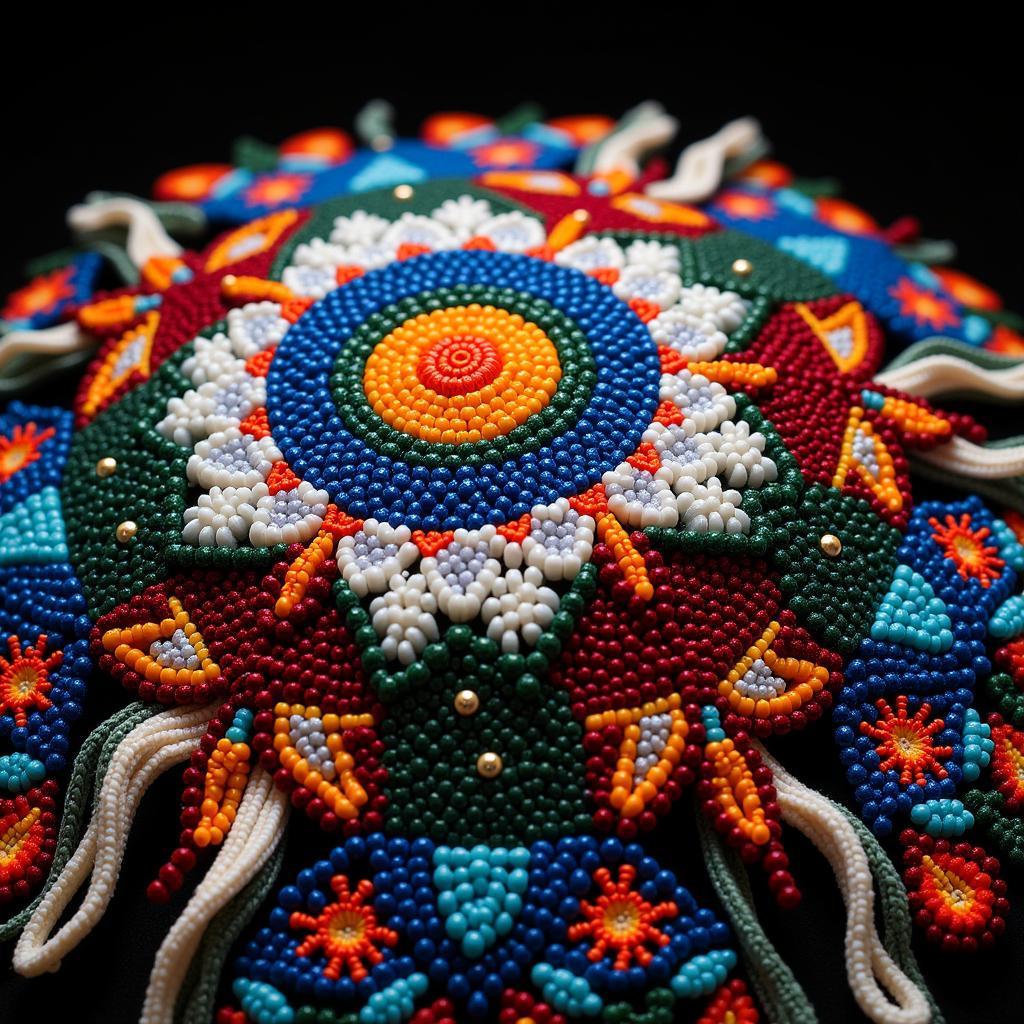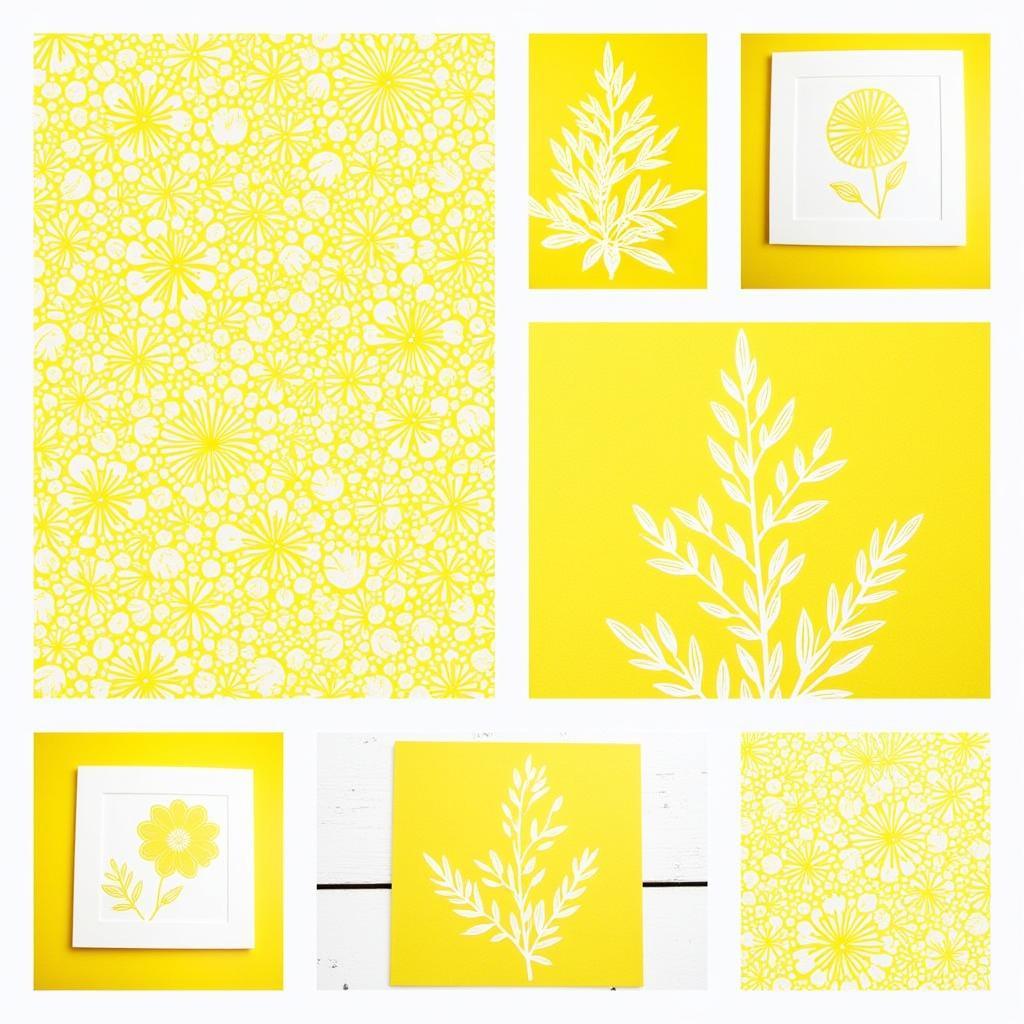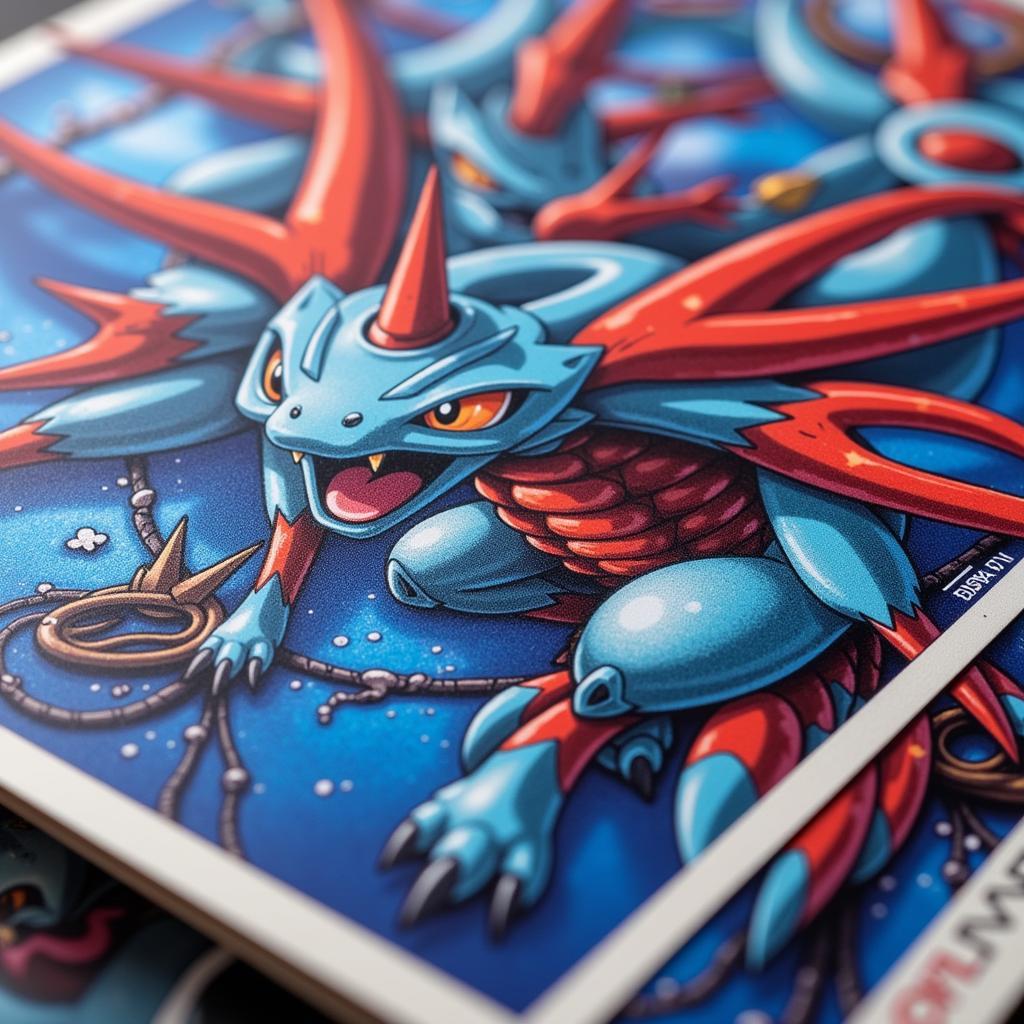Exploring the Mystical World of Peyote Art
Peyote Art is a unique and powerful form of artistic expression deeply rooted in the spiritual beliefs and traditions of the Huichol people, indigenous to the Sierra Madre mountains of Mexico. For centuries, the Huichol have used peyote, a small, spineless cactus with psychoactive properties, in their religious ceremonies. The visions and insights experienced during these rituals often find their way into their art, creating a captivating blend of vibrant colors, intricate patterns, and profound symbolism.
The Significance of Peyote in Huichol Culture
The Huichol, also known as the Wixárika, consider peyote a sacred plant that allows them to communicate with their deities and ancestors. It plays a central role in their spiritual life, guiding their understanding of the world, their place within it, and their connection to the divine. The consumption of peyote, often under the guidance of a shaman or Mara’akame, induces a heightened state of consciousness, enabling the Huichol to access profound spiritual insights that they believe guide their lives and shape their destinies.
The Essence of Peyote Art: A Window into Huichol Spirituality
Peyote art is not merely a form of aesthetic expression for the Huichol; it’s a sacred act, a visual language through which they communicate their spiritual experiences, beliefs, and stories. The vibrant colors, intricate designs, and recurring motifs seen in peyote art are not arbitrary; they hold profound symbolic meaning, reflecting the Huichol’s deep connection to nature, their cosmology, and their relationship with the spirit world.
The Language of Symbols: Deciphering the Intricacies
One of the most striking features of peyote art is its use of vivid, contrasting colors. These colors are not chosen randomly; they hold specific symbolic significance. Blue, for instance, often represents rain, essential for the growth of maize, a staple crop and a sacred symbol in Huichol culture. Green symbolizes vegetation and the abundance of nature, while yellow, the color of the peyote flower, signifies spiritual enlightenment and connection to the divine.
The intricate patterns and designs woven into peyote art are equally symbolic, often representing animals, plants, deities, and spiritual beings central to the Huichol belief system. The deer, for example, is a sacred animal for the Huichol, believed to guide their souls to the underworld and back. Representations of deer, often adorned with intricate beadwork or yarn paintings, are common in peyote art, signifying spiritual guidance and the interconnectedness of life and death.
The Evolution of Peyote Art: From Ancient Traditions to Contemporary Expressions
Traditionally, peyote art manifested in various forms, including intricate beadwork, yarn paintings, and carvings. The Huichol are known for their mastery of beadwork, meticulously applying thousands of tiny beads to create mesmerizing patterns on masks, sculptures, and ceremonial objects. Similarly, their yarn paintings, crafted by meticulously pressing colorful yarn onto boards covered with beeswax, depict scenes from their mythology, history, and spiritual experiences.
While these traditional forms of peyote art continue to thrive, recent decades have seen a fascinating evolution as Huichol artists embrace new materials and techniques. Today, one can find peyote-inspired artwork expressed through various mediums, including painting, sculpture, jewelry making, and even digital art.
“The beauty of Huichol art lies not just in its visual appeal but in its ability to transport the viewer into the heart of a culture deeply connected to nature and the spirit world,” says renowned art historian Dr. Elena Garcia. “Each piece is a testament to the enduring power of ancient traditions in a modern world.”
The Enduring Legacy: Peyote Art’s Impact and Influence
Peyote art’s influence extends beyond the Huichol communities, captivating art enthusiasts and collectors worldwide. Museums and galleries around the globe showcase these vibrant creations, providing a glimpse into the rich cultural heritage and spiritual depth of the Huichol people. The increasing recognition and appreciation for peyote art have also led to greater awareness and understanding of indigenous art forms and the importance of preserving cultural diversity.
 Contemporary Huichol Beadwork Art
Contemporary Huichol Beadwork Art
Conclusion: Embracing the Mystical Allure of Peyote Art
Peyote art, with its vibrant colors, intricate patterns, and profound symbolism, offers a captivating window into the rich spiritual world of the Huichol people. It’s a testament to the enduring power of art as a language that transcends cultural boundaries, inviting us to appreciate the beauty and diversity of human experience.
FAQ:
-
What is the main purpose of peyote art?
- Peyote art serves as a visual language for the Huichol people to express their spiritual beliefs, experiences, and stories.
-
What are some common symbols used in peyote art, and what do they represent?
- Common symbols include the deer (spiritual guidance), peyote flower (enlightenment), blue (rain), and green (vegetation), each carrying profound cultural and spiritual significance.
-
How has peyote art evolved over time?
- While traditional forms like beadwork and yarn paintings persist, contemporary Huichol artists are exploring new mediums like painting, sculpture, and digital art, incorporating traditional motifs and symbolism.
-
Why is peyote art significant in a global context?
- Peyote art provides a glimpse into the unique cultural heritage of the Huichol, fostering appreciation for indigenous art forms and promoting cultural diversity.
-
Where can I learn more about peyote art and the Huichol culture?
- You can explore arte huichol en chaquira for a deeper understanding of Huichol art and its cultural significance.
Need assistance? Contact us:
- Phone: 02462573573
- Email: danteum@gmail.com
- Address: Savico Megamall, 7-9 Đ. Nguyễn Văn Linh, Gia Thụy, Long Biên, Hà Nội 10000, Việt Nam.
Our customer service team is available 24/7 to assist you.




